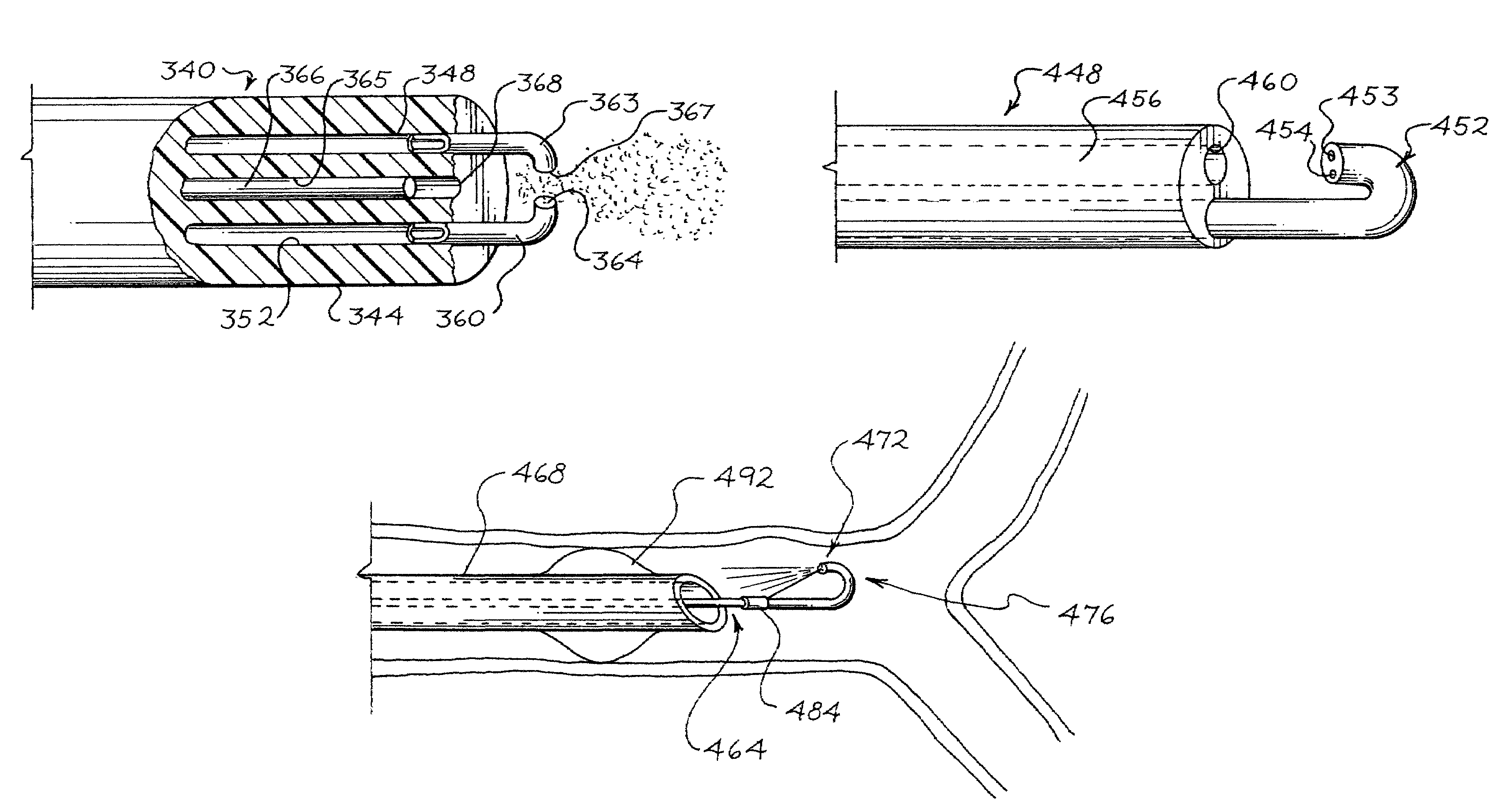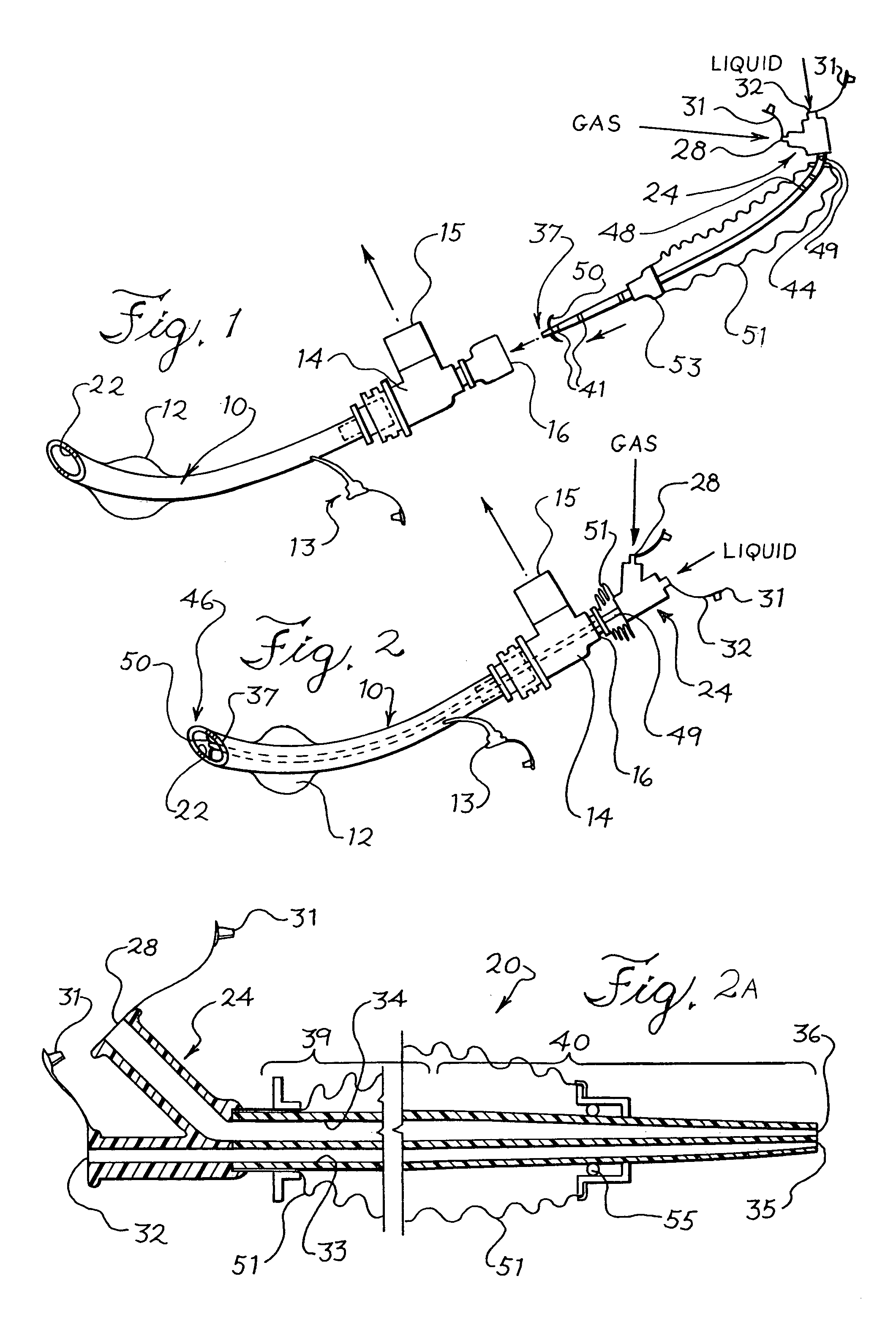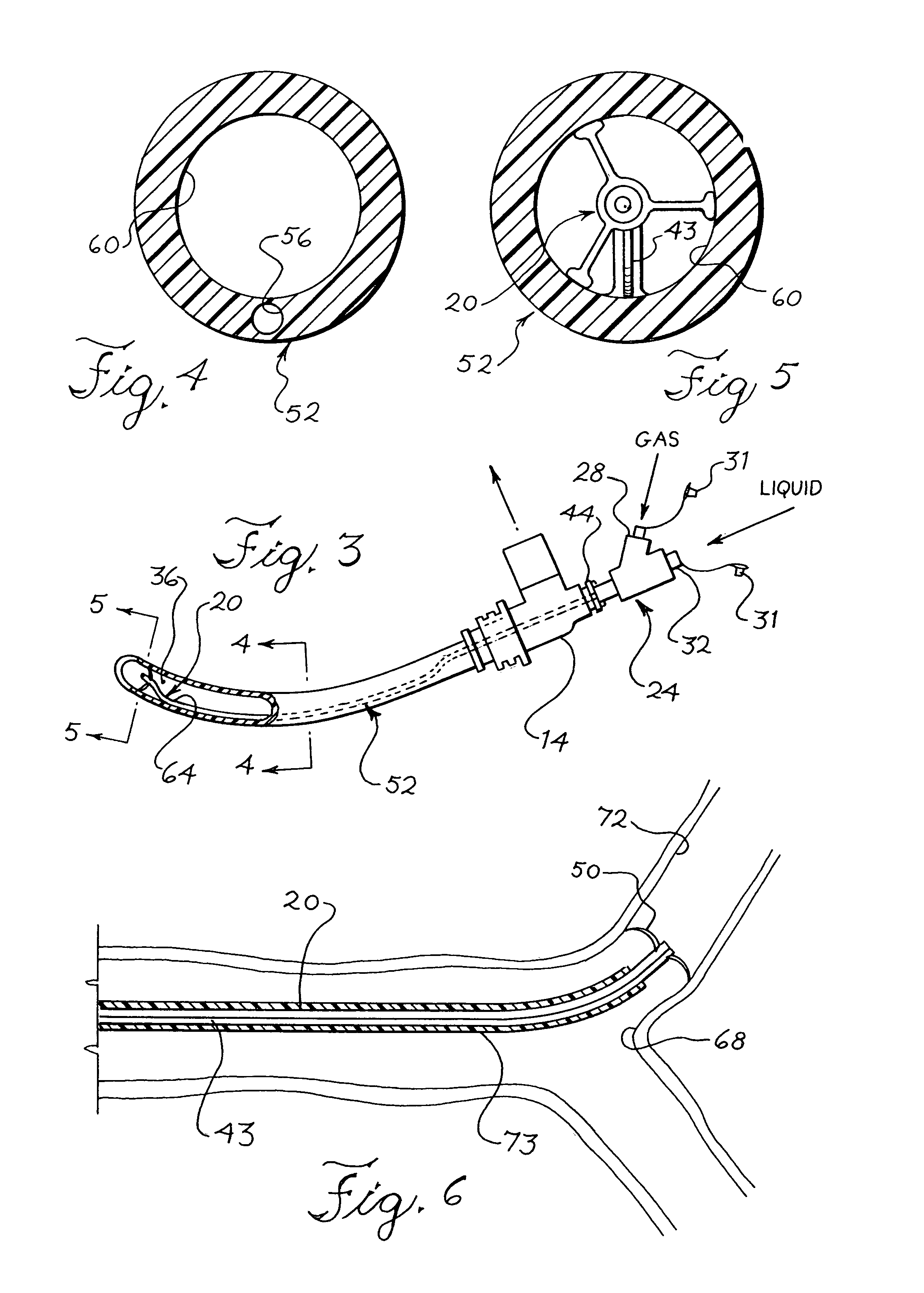Nebulizing catheter system for delivering an aerosol to a patient
a technology of nebulizing catheter and aerosol, which is applied in the direction of tracheal tubes, medical atomisers, inhalators, etc., can solve the problems of limited medication delivery rate, efficiency and control, limited use and application, and substantial portion of medicine not being delivered to the lungs, so as to achieve controllable and efficient delivery of medicin
- Summary
- Abstract
- Description
- Claims
- Application Information
AI Technical Summary
Benefits of technology
Problems solved by technology
Method used
Image
Examples
first embodiment
[0093]Referring to FIGS. 1 and 2, there is depicted the present invention. FIGS. 1 and 2 show an endotracheal tube 10 which may be a conventional endotracheal tube. The endotracheal tube 10 may have an inflatable cuff 12 located close to its distal end to facilitate positioning the tube 10 in the patient's trachea, or alternatively the endotracheal tube 10 may be of a type without an inflatable cuff. The inflatable cuff 12 is connected via a separate inflation lumen in the endotracheal tube 10 to a proximal fitting 13 for connection to a source of inflating gas (not shown). The endotracheal tube 10 has a proximal end connected to a manifold fitting 14. The fitting 14 has a port 15 suitably adapted for connection to a ventilator circuit (not shown). The fitting 14 also includes another port 16 that permits the introduction of a separate catheter into the endotracheal tube from the proximal end. The fitting 14 may be similar in construction to the elbow fitting described in U.S. Pat. ...
embodiment 136
[0124]FIGS. 12 and 13 show an alternative embodiment 136 of the multiple lumen nebulization catheter in FIG. 11. The embodiment in FIGS. 12 and 13 is useful when it is desired to provide the aerosol medicine with a pulsed delivery. The pulsed delivery may be timed to coincide with the inhalation of the patient so that aerosol is not wasted when the patient is exhaling. A potential drawback with pulsed delivery is that the aerosol may drool from the tip of the nebulizing catheter when the pressure being applied to the liquid is reduced to effect the pulsation. To avoid this potential problem, the nebulizing catheter 136 provides for closure of the liquid lumen when the pressure being applied to it is reduced. As in the previously described embodiment, the nebulization catheter 136 in FIGS. 13 and 14, has a centrally located lumen 137 for delivery of a liquid medicine and a plurality of lumens 138 surrounding the central lumen 137 for conveyance of a pressurized gas to nebulize the li...
embodiment 252
[0132]In a manner similar to the embodiments 208 and 236 of FIGS. 16 and 17, in the embodiment 252 of FIGS. 18 and 19, the distal tip of the retractable wire 292 can extend distally from the distal liquid orifice 288 in order to minimize particle size, or alternatively may not extend distally of the distal liquid orifice 292. In one embodiment, the distal tip of the retractable wire may extend distally of the liquid orifice 288 by approximately 0.2 mm.
[0133]FIG. 20 shows another embodiment of a nebulizing catheter. In this embodiment, a nebulizing catheter 296 has a main shaft portion 300 with a gas lumen 304 adjacent to a liquid lumen 308. The gas and liquid lumens 304 and 308 flow into a distal cavity 312. The distal cavity 312 is formed by an outer tubular extension 316 that extends distally over and past a distal end 320 of the main shaft portion 300. A filter 324 is located in the liquid lumen 308 to filter out any particles in the liquid. The liquid lumen 308 has a step down i...
PUM
 Login to View More
Login to View More Abstract
Description
Claims
Application Information
 Login to View More
Login to View More - R&D
- Intellectual Property
- Life Sciences
- Materials
- Tech Scout
- Unparalleled Data Quality
- Higher Quality Content
- 60% Fewer Hallucinations
Browse by: Latest US Patents, China's latest patents, Technical Efficacy Thesaurus, Application Domain, Technology Topic, Popular Technical Reports.
© 2025 PatSnap. All rights reserved.Legal|Privacy policy|Modern Slavery Act Transparency Statement|Sitemap|About US| Contact US: help@patsnap.com



